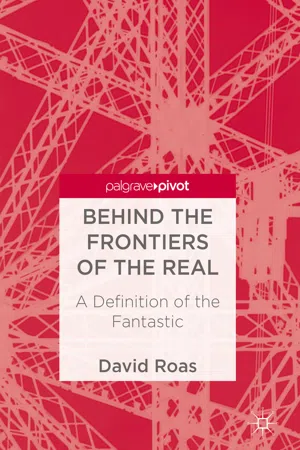A man is paid a visit by a Bible salesman. Amongst the various volumes that he has on offer, there is one that is completely different from all the others: an infinite book. Although in appearance it is normal (it possesses covers, a spine, pages), the various experiments that the protagonist performs on it demonstrate its infinite dimension. Therefore, after examining it, the protagonist concludes: “This is not possible”, to which the Bible salesman, who had already foreseen this reaction (because he is of the same opinion), responds laconically: “It is not possible, but it is”.1 Within the idea of the real that the characters of the story share, the existence of an infinite book is impossible: as the protagonist says, “I felt that it was a nightmarish object, an obscene thing that vilified and corrupted reality”. The problem is that, in spite of it all, the book is still there. An impossible presence that is also imposed on the real readers, whose own idea of reality is questioned. Their own world.
In this scene from his story El libro de arena [The Book of Sand], Borges masterfully identifies the essence of all fantastic narrative: the problematic confrontation between the real and the impossible . That statement, “It is not possible, but it is”, destroys the convictions of the character and the receiver regarding what may be considered real. Split individuals, simultaneous times and spaces, monsters, ruptures in cause and effect, the fusion of dreaming and waking, the blurring of the frontiers between reality and fiction, impossible objects… the motifs that compose the universe of the fantastic are expressions of a subversive will which, above all, seeks to transgress that homogenising reason that organises our perception of the world and of ourselves.
In the prologue to his book Cuentos de los días raros [Tales of Strange Days], José María Merino , one of the great masters of the fantastic in Spain, stated that “Faced with the overpowering feeling of the apparent and common normality that this society wishes to impose on us, literature must chronicle the unusual. Because, in our existence, neither from an ontological nor a circumstantial perspective, there is nothing that is not odd. We want to accustom ourselves to the most comfortable of routines to forget that strangeness, that oddness that is the real sign of our condition” (Merino 2004: 9). And the fantastic is a perfect route to reveal this strangeness, to contemplate reality from an unexpected perspective. The fantastic tale replaces familiarity with strangeness, it places us initially in a normal everyday world (our own) which is immediately assaulted by an impossible phenomenon—which is, as such, incomprehensible—that subverts the codes—the certainties—that we have designed to perceive and understand reality. Ultimately, it destroys our conception of the real and places us in a state of instability and, therefore, in absolute disquiet.
To understand the implications of this confrontation between the real and the impossible , we must first begin by examining what idea of reality we are dealing with, because the fantastic will always depend, by means of contrast, on what we consider as real.
An (Apparently) Stable and Objective Reality
Literature of the fantastic was born into a Newtonian, mechanical universe, conceived as a machine that obeyed the laws of logic and was therefore subject to rational explanation. The Rationalism of the eighteenth century had turned reason into the only means of understanding the world.
Up until this point, three explanations of the real had coexisted without too many problems: science, religion and superstition. Ghosts, miracles, elves and other supernatural phenomena were part of the conception of the real. They were extraordinary, but not impossible .
Although in the sixteenth century the critical development of the scientific mentality had already started to cast doubt on certain magical and superstitious explanations of reality (science arrived to “disenchant” the world), this did not prevent the proliferation of works which—combining science and religion—attempted to demonstrate the genuine existence of a number of manifestations of the supernatural and the extraordinary. Thus, the phenomena compiled in the books of prodigies, miscellanies and treatises on demonology unquestioningly accepted the existence of such phenomena. In spite of significant scientific developments, it could be said that belief in the supernatural continued to dominate until the Age of Enlightenment.
However, in the eighteenth century the relationship with the supernatural changed radically. Reason became the fundamental explanatory paradigm, which translated into a separation of reason and faith; two perspectives that, as previously mentioned, up until that point were integrated with each other, or at the very least were not mutually exclusive. From this point on, in terms of religious matters, the individual would be free to believe or not believe, but in terms of knowledge reason became dominant (although this did not translate into a recognition of atheism), becoming the preponderant discourse determining the models for explaining and representing the world.
Thus, the new paradigm of mechanical philosophy became the essential tool used in order to understand reality:
The universe is conceived as a series of elements whose relationships can be formalized by geometric or mathematical laws just like any other machine; laws that exist in nature because God has so willed it and knowledge of which makes it possible to see the world as a work full of beauty and harmony that speaks to us of the existence of God with no need for any form of Biblical exegesis or revelation. (Fernández 2006: 630)
This rejection of the supernatural also translated into the condemnation of its literary and aesthetic employment. The precepts of the Enlightenment in the second half of the eighteenth century brandished...
